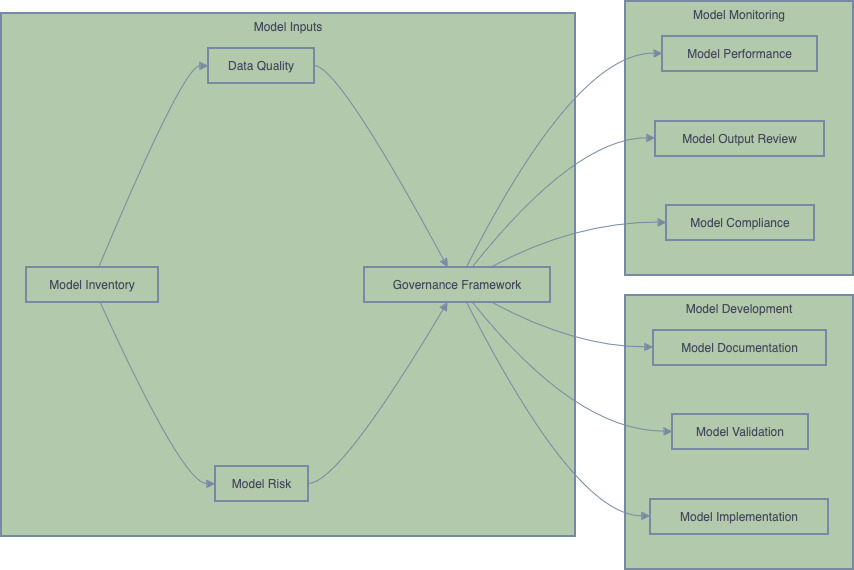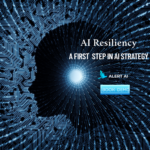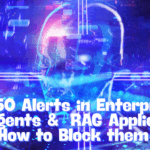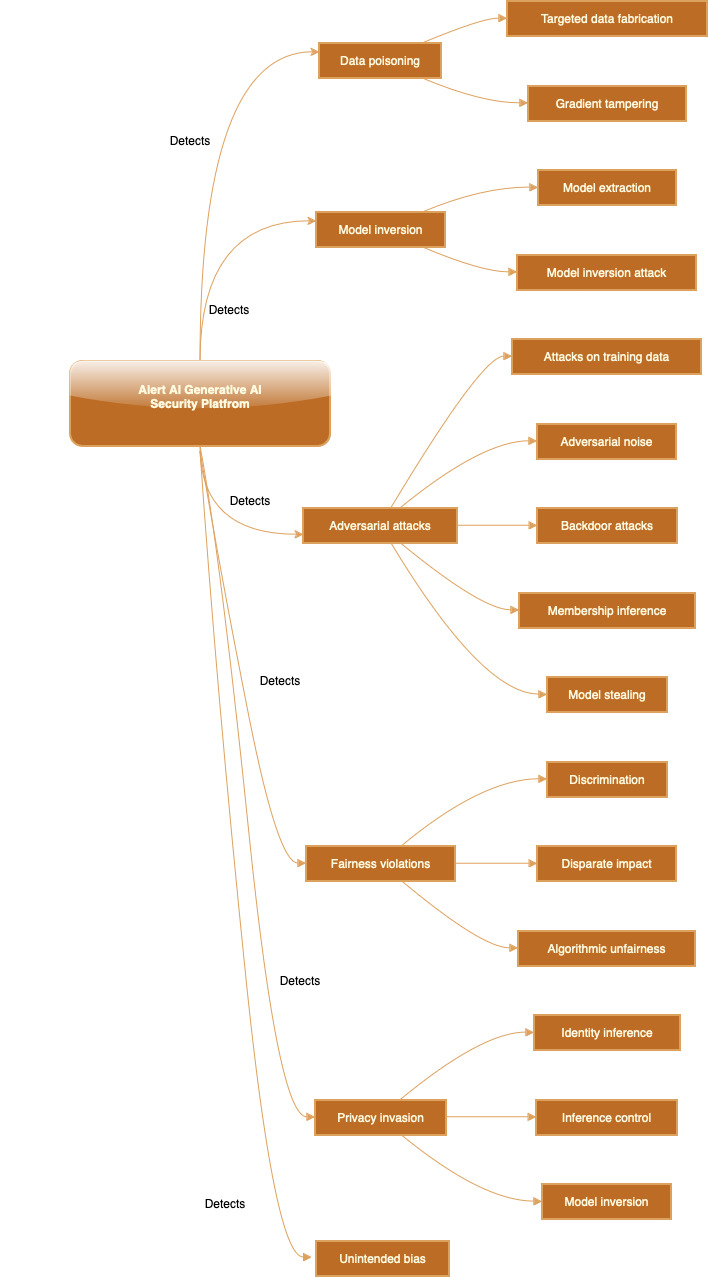LLM and Data Security posture, Evaluations context and Assessments
What is the integration of LLM Evaluation with Pipelines?
The integration of Large Language Model (LLM) evaluation with pipelines involves systematically incorporating the process of assessing the performance and effectiveness of LLMs into the broader workflow of data processing, model training, and deployment. This integration ensures that the LLMs are evaluated continuously and consistently, facilitating improvements and maintaining high standards. Here’s a detailed breakdown of how this can be done:
1. Defining Evaluation Metrics and Criteria
Before integrating LLM evaluation into pipelines, it’s crucial to define clear metrics and criteria for evaluation. These may include:
- Accuracy: The correctness of the responses generated by the model.
- Fluency: The linguistic quality and readability of the responses.
- Relevance: The appropriateness and pertinence of the responses to the input queries.
- Bias and Fairness: Assessing if the model’s outputs are free from biases.
- Robustness: The model’s performance under varying conditions, including adversarial inputs.
2. Building the Evaluation Pipeline
The evaluation pipeline is integrated into the overall machine learning pipeline, which may include stages such as data collection, preprocessing, model training, and deployment. The evaluation pipeline typically consists of the following steps:
a. Data Collection and Preparation
- Test Data: Collect or generate a diverse and comprehensive set of test data that reflects real-world use cases.
- Benchmarking Datasets: Use established benchmarks to compare the LLM’s performance with other models.
b. Automated Evaluation
- Metric Calculation: Implement automated scripts to calculate evaluation metrics. This can be done using libraries such as Hugging Face’s datasets and evaluate.
- Batch Processing: Evaluate the model on batches of test data to ensure scalability and efficiency.
c. Human-in-the-Loop Evaluation
- Human Review: Incorporate human reviewers to assess aspects that are challenging to measure automatically, such as nuanced relevance or subtle biases.
- Feedback Loop: Create a system for reviewers to provide feedback that can be used to refine the model.
3. Integration with Continuous Integration/Continuous Deployment (CI/CD)
a. Automated Testing
- Pre-Deployment Testing: Include evaluation scripts in the CI/CD pipeline to run automatically before deploying new model versions.
- Regression Testing: Ensure that updates do not degrade the performance of the LLM by running regression tests.
b. Monitoring and Logging
- Real-Time Monitoring: Implement monitoring tools to evaluate the model’s performance in real-time once deployed.
- Logging: Log evaluation metrics and errors for ongoing analysis and improvement.
4. Feedback and Iteration
a. Model Tuning
- Hyperparameter Optimization: Use evaluation feedback to optimize hyperparameters.
- Fine-Tuning: Fine-tune the model based on evaluation results and new data.
b. Continuous Improvement
- Iterative Development: Continuously iterate on the model and evaluation processes to enhance performance.
- User Feedback: Incorporate feedback from end-users to refine the evaluation criteria and improve the model.
5. Tooling and Frameworks
Leveraging existing tools and frameworks can streamline the integration process:
- Hugging Face: Provides tools for model evaluation and integration with various pipelines.
- MLflow: Facilitates tracking experiments, logging evaluation metrics, and managing the model lifecycle.
- TensorBoard: Visualizes evaluation metrics and performance over time.
Integration Workflow
- Data Ingestion: Collect input data and expected outputs.
- Preprocessing: Clean and prepare data for evaluation.
- Model Inference: Generate model outputs for the input data.
- Automated Evaluation: Calculate evaluation metrics.
- Human Evaluation: Review and annotate model outputs.
- CI/CD Pipeline: Integrate automated evaluation scripts into CI/CD workflows.
- Monitoring: Track model performance in production.
- Feedback Loop: Collect feedback and iteratively improve the model.
By integrating LLM evaluation with pipelines, organizations can ensure their models are continuously assessed and improved, leading to more reliable and effective language models in production.
Integration of LLM Evaluation with Pipelines
We will, in this example:
- Load a pre-trained LLM (e.g., GPT-2).
- Define evaluation metrics.
- Create an evaluation function.
- Integrate the evaluation function into a pipeline.
Step 1: Load Pre-trained LLM
First, install the necessary libraries:
pip install transformers datasets evaluate
<install the transformers, datasets and its evaluation metric>
Step 2: Define Evaluation Metrics
We will use metrics such as BLEU score for evaluation.
from transformers import GPT2Tokenizer, GPT2LMHeadModel
from datasets import load_metric
# Load the pre-trained model and tokenizer
model_name = ‘gpt2’
model = GPT2LMHeadModel.from_pretrained(model_name)
tokenizer = GPT2Tokenizer.from_pretrained(model_name)
# Load the BLEU metric
bleu_metric = load_metric(‘bleu’)
Step 3: Create Evaluation Function
Define a function to generate text and calculate the BLEU score.
import torch
def evaluate_model(model, tokenizer, inputs, references, max_length=50):
model.eval()
generated_texts = []
for input_text in inputs:
inputs_ids = tokenizer.encode(input_text, return_tensors=’pt’)
outputs = model.generate(inputs_ids, max_length=max_length, num_return_sequences=1)
generated_text = tokenizer.decode(outputs[0], skip_special_tokens=True)
generated_texts.append(generated_text)
# Calculate BLEU score
results = bleu_metric.compute(predictions=[generated_text.split() for generated_text in generated_texts],
references=[[ref.split()] for ref in references])
return results
Step 4: Integrate Evaluation Function into Pipeline
Create a simple pipeline that includes model evaluation.
def pipeline(model, tokenizer, test_data):
inputs = [example[‘input_text’] for example in test_data]
references = [example[‘reference_text’] for example in test_data]
# Evaluate the model
evaluation_results = evaluate_model(model, tokenizer, inputs, references)
print(f”BLEU Score: {evaluation_results[‘bleu’]:.4f}”)
# Example test data
test_data = [
{“input_text”: “The weather today is”, “reference_text”: “The weather today is sunny and warm.”},
{“input_text”: “Once upon a time”, “reference_text”: “Once upon a time, there was a brave knight.”}
]
# Run the pipeline
pipeline(model, tokenizer, test_data)
What is LLM Tokenization?
LLM tokenization is the process of converting a sequence of text into smaller units called tokens, which are the basic building blocks used by the model to understand and generate text. Tokenization is a crucial step in natural language processing (NLP) as it transforms human-readable text into a format that can be processed by a machine learning model.
Key Concepts of LLM Tokenization
- Tokens:
- Definition: Tokens can be words, subwords, characters, or symbols, depending on the tokenization strategy used.
- Purpose: They represent the smallest units of meaning that the model processes.
- Tokenizers:
- Definition: Tokenizers are algorithms or tools that perform the task of tokenization.
- Types: Different types of tokenizers exist, such as word-level tokenizers, subword-level tokenizers (like Byte Pair Encoding), and character-level tokenizers.
Types of Tokenization
- Word-Level Tokenization:
- Description: Splits text into individual words based on spaces and punctuation.
- Pros: Simple and intuitive.
- Cons: Inefficient for handling rare words or languages with rich morphology.
- Subword-Level Tokenization:
- Byte Pair Encoding (BPE):
- Description: A method that merges the most frequent pairs of characters or character sequences iteratively.
- Pros: Efficiently handles rare and unknown words by breaking them into common subword units.
- WordPiece:
- Description: Similar to BPE, used by models like BERT.
- Pros: Balances between word-level and character-level tokenization.
- Unigram Language Model:
- Description: Selects a subset of subwords based on a probabilistic model.
- Pros: Allows more flexibility in tokenization.
- Byte Pair Encoding (BPE):
- Character-Level Tokenization:
- Description: Splits text into individual characters.
- Pros: Handles any text without the need for a predefined vocabulary.
- Cons: Produces longer sequences, making the model slower and less efficient.
How Tokenization Works in LLMs?
- Vocabulary:
- Definition: A predefined set of tokens that the model recognizes.
- Purpose: Each token in the text is mapped to an index in the vocabulary.
- Tokenization Process:
- Text Input: The raw text input is provided to the tokenizer.
- Splitting: The text is split into tokens based on the chosen tokenization strategy.
- Mapping: Each token is mapped to its corresponding index in the vocabulary.
- Output: The tokenizer outputs a sequence of token IDs, which are fed into the LLM.
Examples of Tokenizers in LLMs
- GPT-3 Tokenizer:
- Uses a variant of Byte Pair Encoding.
- Text is efficiently tokenized into subwords and handles a vast vocabulary.
- BERT Tokenizer:
- Uses the WordPiece tokenization method.
- Balances word and subword tokens to handle a wide range of linguistic phenomena.
Importance of Tokenization
- Efficiency:
- Reduces the complexity of text data by breaking it into manageable pieces.
- Allows models to handle a large and diverse vocabulary efficiently.
- Model Performance:
- Affects the model’s ability to learn and generate text. If we do not use tokenization then it would increase the computational complexity and lower their model’s accuracy and performance.
- Proper tokenization ensures that the model captures meaningful patterns in the data.
- Flexibility:
- Subword tokenization handles out-of-vocabulary words and rare terms, making the model robust to various inputs.
Challenges in Tokenization
- Ambiguity:
- Homonyms and polysemous words can be challenging to tokenize correctly without context.
- Language Diversity:
- Different languages have different tokenization needs, especially languages with complex morphology or writing systems.
- Trade-offs:
- Balancing between word-level and character-level tokenization to optimize for model size and performance.
Security Context
Adversarial attacks on Training, Evaluation pipelines
Prompt security and Tokenizer security
Tokenizer manipulation attacks
Insufficient validation when initializing tokenizers
Encoding or decoding attacks
Suble bias introduction Attack
Prompt injection attack
Expensive repeat requests Attacks
Long-running requests attacks
Divergence attacks
Conclusion
In summary, LLM tokenization is a fundamental step in preparing text data for large language models. It involves breaking down text into tokens, which are then used by the model to process and generate text. The choice of tokenization strategy can significantly impact the efficiency and performance of the model.
About Alert AI
Alert AI is end-to-end, Interoperable Generative AI security platform to help enhance security of Generative AI applications and workflows against potential adversaries, model vulnerabilities, privacy, copyright and legal exposures, sensitive information leaks, Intelligence and data exfiltration, infiltration at training and inference, integrity attacks in AI applications, anomalies detection and enhanced visibility in AI pipelines. forensics, audit,AI governance in AI footprint.
What is at stake AI & Gen AI in Business? We are addressing exactly that.
Generative AI security solution for Healthcare, Insurance, Retail, Banking, Finance, Life Sciences, Manufacturing.
Despite the Security challenges, the promise of Generative AI is enormous.
We are committed to enhance the security of Generative AI applications and workflows in industries and enterprises to reap the benefits .
Alert AI 360 view and Detections
- Alerts and Threat detection in AI footprint
- LLM & Model Vulnerabilities Alerts
- Adversarial ML Alerts
- Prompt, response security and Usage Alerts
- Sensitive content detection Alerts
- Privacy, Copyright and Legal Alerts
- AI application Integrity Threats Detection
- Training, Evaluation, Inference Alerts
- AI visibility, Tracking & Lineage Analysis Alerts
- Pipeline analytics Alerts
- Feedback loop
- AI Forensics
- Compliance Reports
End-to-End Security with
- Data alerts
- Model alerts
- Pipeline alerts
- Evaluation alerts
- Training alerts
- Inference alerts
- Model Vulnerabilities
- Llm vulnerability
- Privacy
- Threats
- Resources
- Environments
- Governance and Compliance
Organizations need to responsibly assess and enhance the security of their AI environments development, staging, production for Generative AI applications and Workflows in Business.














No Comments